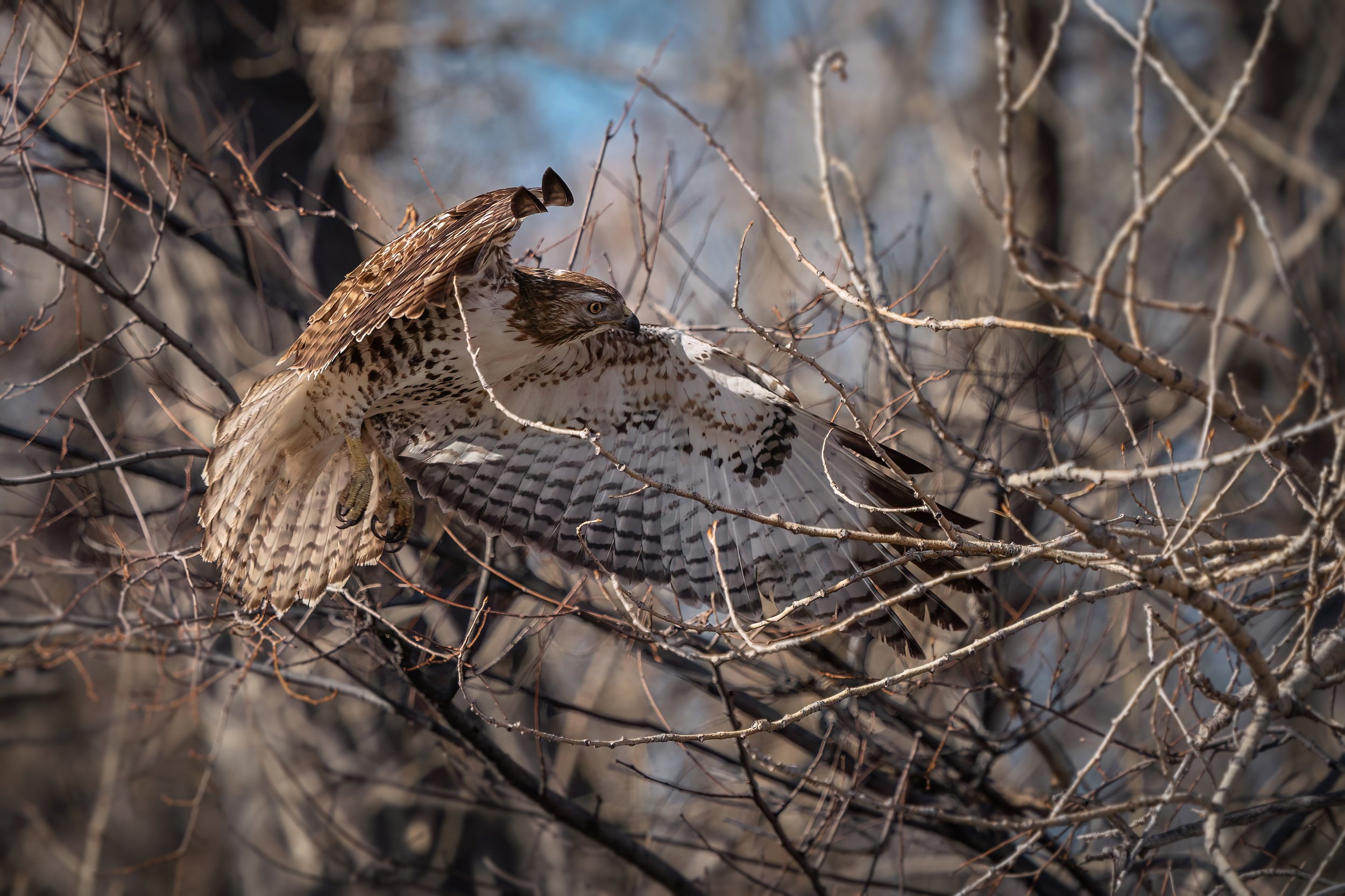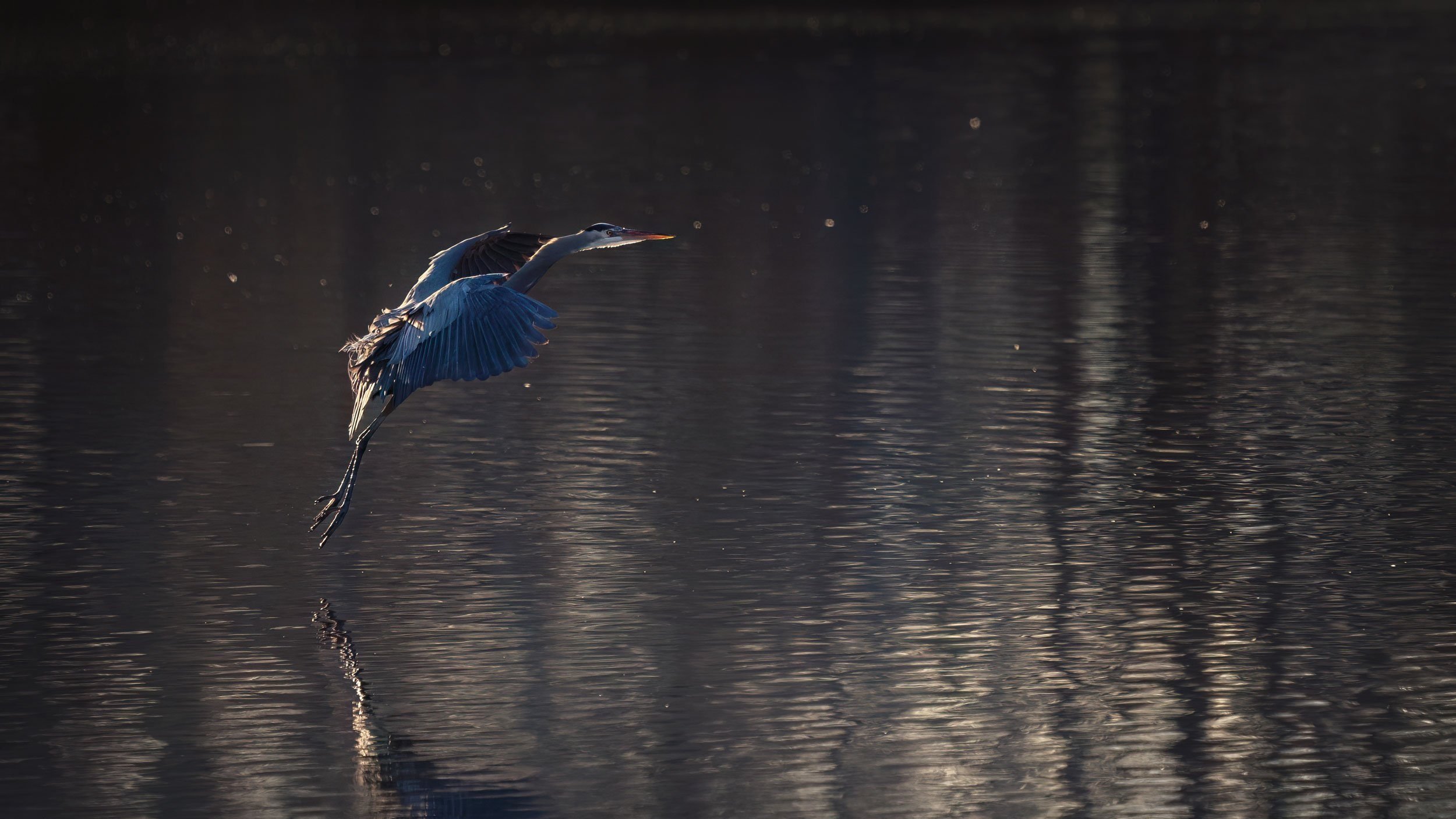What a Hoot: Great Horned Owl Babies: Part II
I promised more owl babies and here they are! This second family was located by Twin Silo Park. Sadly, sometime in mid June their nesting tree was cut down due to safety issues (rotten inside). They had used this tree for many years. Thankfully, they moved on to surrounding trees. Baby owls typically stick around the nest for up to 42 days. I will be sad next year when they have to find a new nesting tree, and me, new owls to photograph. As you can see by the fluffy feathers and large leaves, these owls were much younger and born later than the other ones I had photographed. This family also had three owlets in their brood. Great horned owls can have anywhere from 1-4 owlets. How many owls do you spot in the photo below?
Chance Encounters at Riverbend Ponds Natural Area: Red-Tailed Hawk
It never ceases to amaze me when I have extraordinary chance encounters with wildlife. My golden rule should be if you don’t get out there, you won’t ever see anything! I spent a lovely morning in April walking around the Riverbend Natural Area in Fort Collins, Colorado. It was about an hour and a half after sunrise, not exactly the ideal time to catch wildlife waking up, but it was the earliest I could get out that day. Either way, I thought I’d at least see and hear the red-winged blackbirds chirping from last years leftover cattails and get a little dose of the outdoors to tide me over for the day I had planned, parked in front of my computer. There’s something about their never ending loud calls to each other in the spring that makes me realize spring really is here even if the weather is not indicative of that.
Finally, Spring Is Here!
I can’t tell you how excited I am for spring! I love when the blackbirds return, the animals start frolicking outside again, the bulbs start blooming, nests are built, and the baby animals hatch or are born. Every day in the spring is an adventure and I plan to record my outings and post here on my blog. The first edition of my spring blog will focus primarily on the blue herons return to Northern Colorado and their nesting habits.



